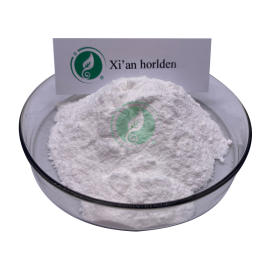-
Categories
-
Pharmaceutical Intermediates
-
Active Pharmaceutical Ingredients
-
Food Additives
- Industrial Coatings
- Agrochemicals
- Dyes and Pigments
- Surfactant
- Flavors and Fragrances
- Chemical Reagents
- Catalyst and Auxiliary
- Natural Products
- Inorganic Chemistry
-
Organic Chemistry
-
Biochemical Engineering
- Analytical Chemistry
- Cosmetic Ingredient
-
Pharmaceutical Intermediates
Promotion
ECHEMI Mall
Wholesale
Weekly Price
Exhibition
News
-
Trade Service
Editor in charge: Food Science
Introduction
Flaxseed has become a functional food due to its high content of alpha -linolenic acid (ALA), flax lignans (SDG) and dietary fiber
Type 1 diabetes (T1D) accounts for 5% to 10% of global diabetes.
Dietary intervention has shown important benefits for diabetes.
Therefore, Hui Xia and Guiju Sun* of Southeast University in this study aimed to further study the role of whole flaxseed in the progression of T1D
Figure 1 Test results of MF fed T1D mice
Figure 2 Histopathological evaluation of pancreas in MF-fed miceFigure 3 The effect of MF feeding on diabetic mice
As shown in Figure 4D, phylum-level intestinal flora imbalance was observed in T1D, and flaxseed feeding reversed this situation to a certain extent
Figure 4 The effect of MF feeding on the distribution and composition of feces of T1D mice
Then the differences between groups were analyzed at the level of phylum, genus and species
.
Among them, the MOD group had the lowest proportion of bacteria.
Compared with the MOD group, MF feeding showed an upward trend
.
After STZ injection, the proportion of actinomycetes in the MOD group and the MF group decreased significantly (Figure 5A)
.
Compared with the MOD group, MF feeding showed a statistical adjustment, that is, increased the relative abundance of Bacteroides and UBA1819, and decreased the relative abundance of Enterococcus and Family_XIII_AD3011_group (Figure 5B)
.
Further, in the species level, significantly improves the MF feeding uncultured_bacterium_g_ Bacteroides relative abundance and uncultured_bacterium_g_UBA1819, reducing faecalis and uncultured_bacterium_g_ Family_XIII relative abundance _AD3011_group (FIG.
5C)
.
Figure 5 The effect of MF feeding on specific bacteria at the phylum, genus and species level
In addition, a correlation analysis between the improved physiological parameters and the gate was carried out at the gate level
.
The increase in the relative abundance of Firmicutes is significantly correlated with the increase in liver glycogen levels and body weight
.
The decrease in the relative abundance of Proteobacteria is significantly related to the increase in liver glycogen level and the decrease in blood glucose concentration
.
Conclusion
Flaxseed as a functional food shows health benefits.
It is not only rich in ALA and dietary fiber, but also becomes an important source of high-quality protein and phenolic compounds
.
The nutrient content of ground flaxseed is more bioavailable than whole seeds
.
This experiment aims to evaluate the effect of ground flaxseed on glucose homeostasis and its underlying mechanisms, including anti-inflammatory and alteration of the gut microbiota
.
The experiment showed that flaxseed can regulate body weight, lower blood sugar levels, and improve glucose tolerance and islet morphology in T1D mice
.
Adding ground flaxseed to the diet of mice has a significant effect on liver inflammation through the TLR4/NF-κB pathway
.
In addition, flaxseed feeding changes the composition of the intestinal microbiota, significantly reduces the abundance of the intestinal microbiota, increases the diversity of the microbiota, and regulates the distribution of the flora at different levels
.
In conclusion, this study shows that ground flaxseeds can anti-inflammatory and change the gut microbiota of STZ-induced diabetic mice through TLR4/NF-κB, showing the potential of anti-T1D
This article is an English version of an article which is originally in the Chinese language on echemi.com and is provided for information purposes only.
This website makes no representation or warranty of any kind, either expressed or implied, as to the accuracy, completeness ownership or reliability of
the article or any translations thereof. If you have any concerns or complaints relating to the article, please send an email, providing a detailed
description of the concern or complaint, to service@echemi.com. A staff member will contact you within 5 working days. Once verified, infringing content
will be removed immediately.







